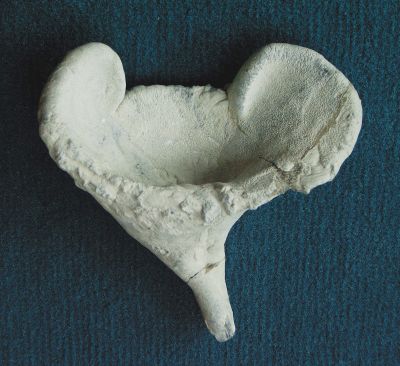
Procorallistes polymorphus
Schrammen 1910
Procorallistes polymorphus commonly occurs as folded plates or ear-shaped forms, usually not exceeding 6 to 8 mm in thickness. The margins are rounded and the surfaces appear dense, without obvious pores.

Procorallistes polymorphus was originally classified by Schrammen (1910) as a member of the dicranocladine Family Corallistidae. De Laubenfels (1955) has placed Procorallistes into the Family Kaliapsidae under the Suborder Rhizomorina, and Reid (2004) has reallocated Procorallistes in Schrammen's (1924) Suborder Dicranocladina. - The taxonomic difficulties appear to arise from the fact that both, rhizoclone-like and dicranoclone-like spicules occur side by side (See bottom picture).
In the two specimens shown on the left, tuberculate and rhizoclone-like desmas dominate in the higher parts, while smooth, intertwined dicranoclone-like spicules form a dense structure near the base. Dermal dichotriaenes are abundant in the foot region of well preserved specimens.

... Procorallistes polymorphus

... Procorallistes polymorphus

The small sample of Procorallistes polymorphus shown in the picture is probably a juvenile form. It is only 2 mm thick and has the form of a spatula.

The spicules shown on the left are
(a) dicranoclones,
(b) megarhizoclonides and
(c) dichotriaenes.
After Schrammen (1910).